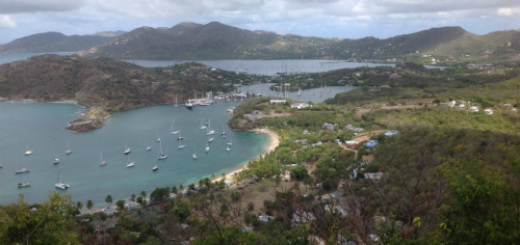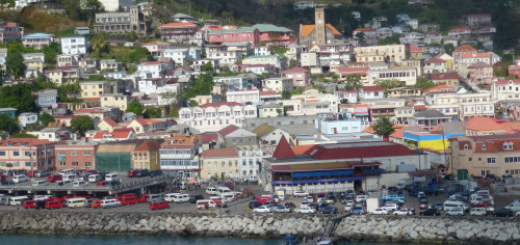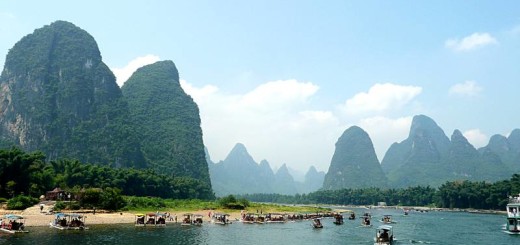Porto
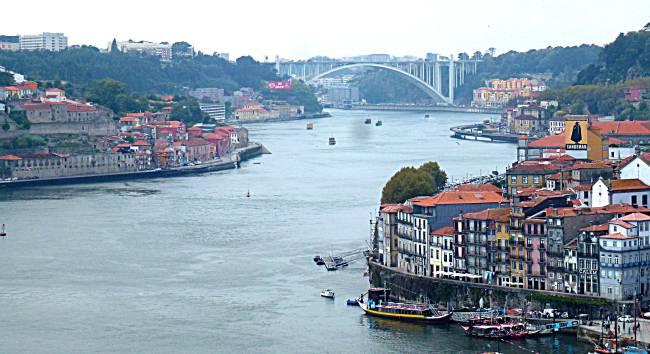
I had been wanting to visit Portugal for a long time and now we were there I was so excited. The city of Porto (or Oporto), our first stop, is Portugal’s second largest city, located on the Douro River.

The name is synonymous with the area’s most famous product – port wine – and the Rabelo boats that transport the barrels can be seen moored along the river docks.

Our HAL cruise ship, the Rotterdam, docked at the main port of Leixões (north of the Douro in the area of Matosinhos) and were collected by our tour driver, Carmen, and guide, Ricardo, from City Tailors. Their aim is to tailor a tour of the city to their clients’ interests, so of course we asked for wine, food and architectural highlights.
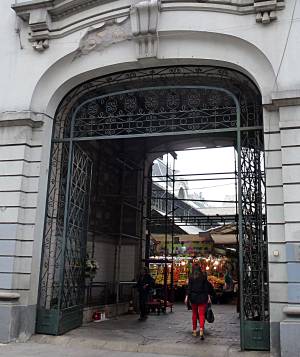
Consequently, the best place to start was the Mercado do Bolhão, the city’s famous fresh food market, in the Baixa (downtown) district. The rectangular building has two floors, with the top level stalls on balconies overlooking the centre courtyard which has stalls framed in wrought iron and ranged in long rows down the middle.
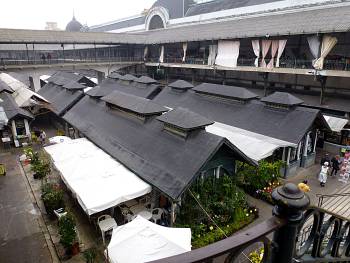
Stallholders are mainly women who are interesting characters with their spruiking cries and banter with the shoppers. We were offered tastes of some of the foods for sale and bought some snacks for later. I also found a stall selling kitchen supplies, so bought a beautiful tablecloth and pot holders featuring the blue and white ceramic tiles (azulejos) patterns for which Portugal is famous.
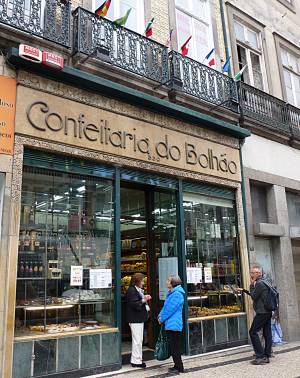
Now that our appetites had been whetted we were keen to visit the nearby Confeitaria do Bolhão (bakery) for a mid morning coffee and a selection of the local pastries.
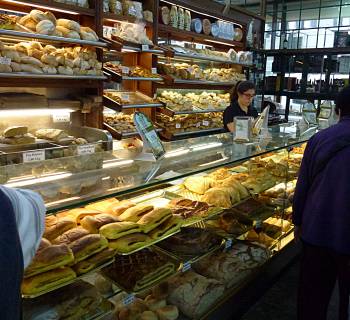
First on our list to try were the pasteis de nata, commonly known as Portuguese custard tarts, followed by moist coconut macaroons (coquinhos) and éclairs. Ricardo explained that these were the most popular cakes in Porto.

Thus fortified, we were off to the São Bento station to admire the azulejos we had been hearing so much about.

Here the main hall is totally decorated with 20,000 blue and white ceramic tiles, – hand-painted by Jorge Colaço before glazing – to display important episodes in Portugal’s history. It was an incredible feat to reassemble the tiles into the vast tableaux spanning the walls.

These iconic tiles can be seen on buildings in many parts of Porto, particularly on important buildings such as the church of St Anthony and the Cathedral of the Assumption of Our Lady (Sé do Porto), where it is a feature of the Baroque loggia and the Gothic cloisters.
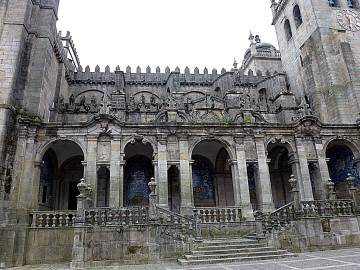
The cathedral, perched at the top of one of Porto’s hills, is is one of the city’s oldest monuments – having its origins in the 12th Century – and one of the most important Romanesque monuments in Portugal.
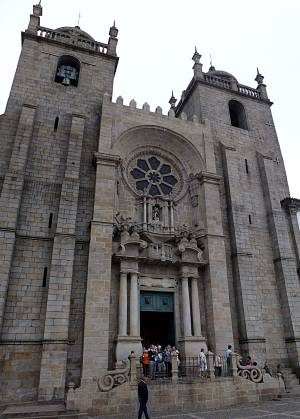
Since we were keen to experience the Portuguese form of tapas (petiscos) and their unique vinho verde (green wine), Ricardo took us to a small, non-touristy restaurant for lunch, where he ordered several plates of food for us to share and glasses of wine, including tinto (red wine) the obligatory local port. The food was delicious and the green wine was not really green, but a young white with the slightest hint of fizz, and a very good companion to bacalhau (codfish) and deep-fried petingas (sardines).
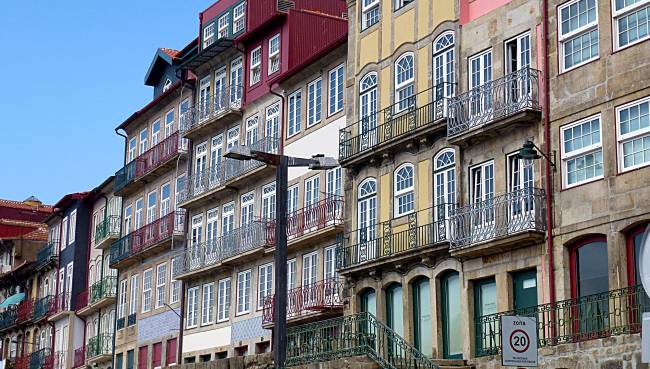
Then it was off to the Ribeira (riverside) district to see the Rabelo boats and the fascinating architecture of the buildings along the dock as well as the bustling restaurant area of Ribeira Square nearby. First settled by the Romans in the 4th Century, it was an important trading hub in the Middle Ages. The houses that date from that time are quite narrow but several storeys high with ornate windows and balconies that make such a pretty picture. This is part of the historical centre of the city, which was given World Heritage status by UNESCO in 1996.

On the southern side of the Douro is the city of Vila Nova de Gaia, a city in its own right but still part of the Porto District. This is where the famous port caves (cellars) can be found. The metal-arched bridge spanning the river at this point is the Dom Luís 1 Bridge, the biggest of several bridges crossing the river. Porto is sometimes called ‘The City of Bridges’ for that reason.
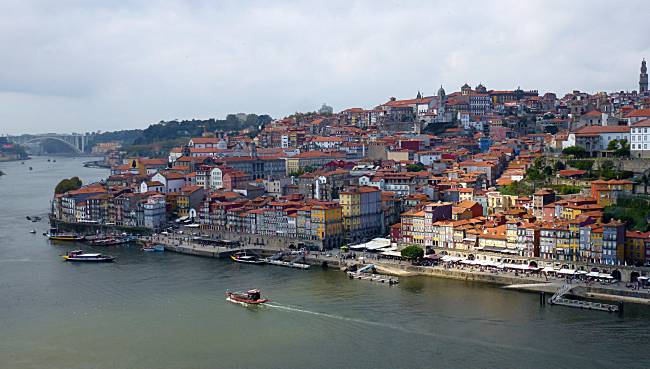
From a viewpoint beside the top of the bridge on the Gaia side we were able to see a terrific panorama of Porto.
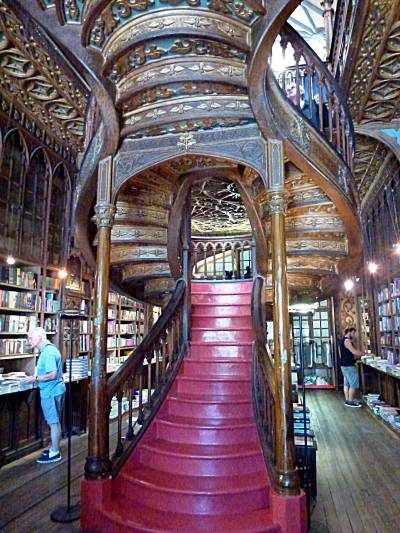
Other photogenic places of interest we had a chance to visit included the Lello Bookshop (Livraria Lello & Irmão), which is frequently rated among the most beautiful bookstores in the world. Opened in 1906 in the West Baixa area, it is a blend of Neo-Gothic and Art Nouveau design. Its staircase has to be one of the most unusual I have ever seen.
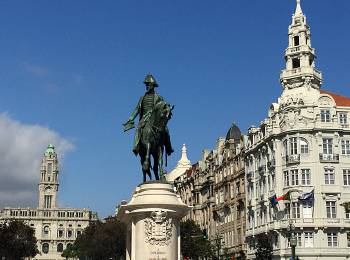
The buildings around Praça da Liberdade (Freedom Square) and Avenida dos Aliados are also quite beautiful in their Neo-Classical design, with a monument to Dom Pedro IV in recognition of his victory in the Liberal Wars (Portuguese Civil War 1828-34).
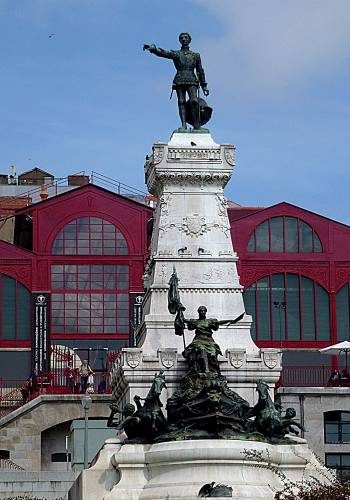
Another important statue is that of Prince Henry the Navigator, who was born in Porto.
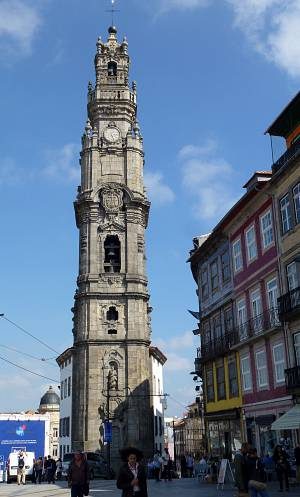
However, the most iconic monument is also the symbol of Porto – the Clérigos Church belltower. Of Baroque design and 75.6 metres in height, it is visible from all over the city.
Well, Porto was everything I hoped for. The people were friendly, the food and wine was delicious, the pace was relaxed and the sightseeing was spectacular. Now on to Lisbon, which promised even more. Can’t wait!
Related articles
- Best of Porto: What To See And Do In 1 Or 2 Days (juliedawnfox.com)
- Footloose In The Douro – 12. Train To Porto (harrogatewine.wordpress.com)
